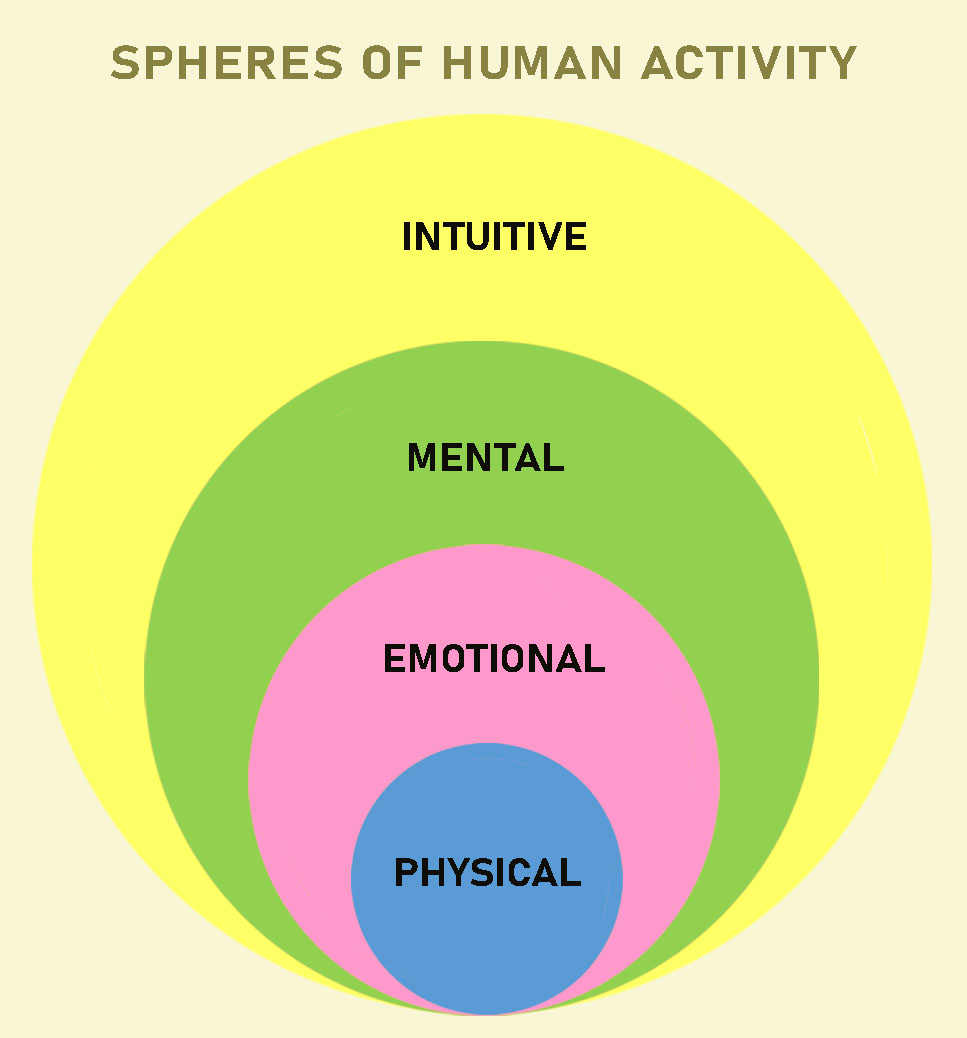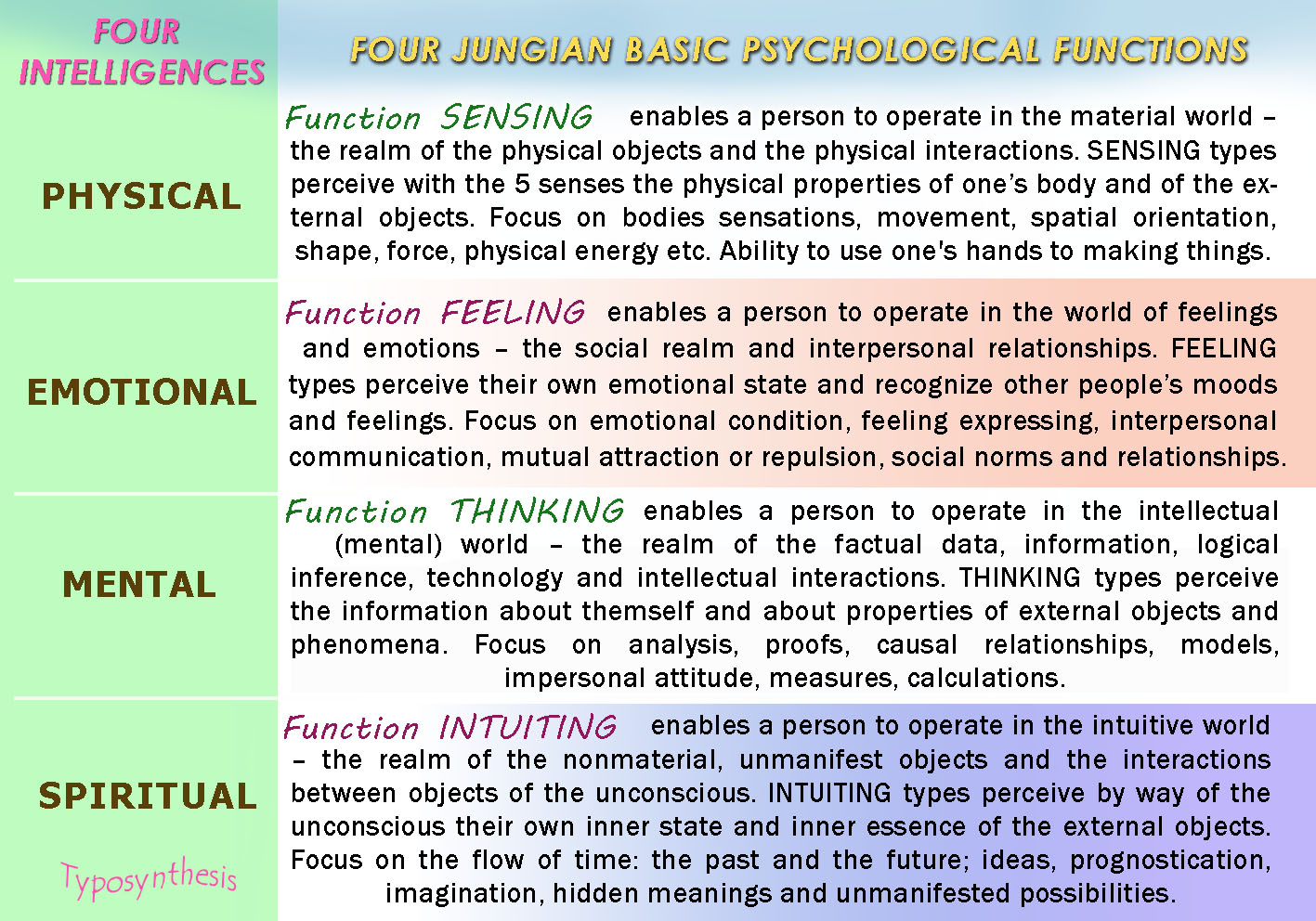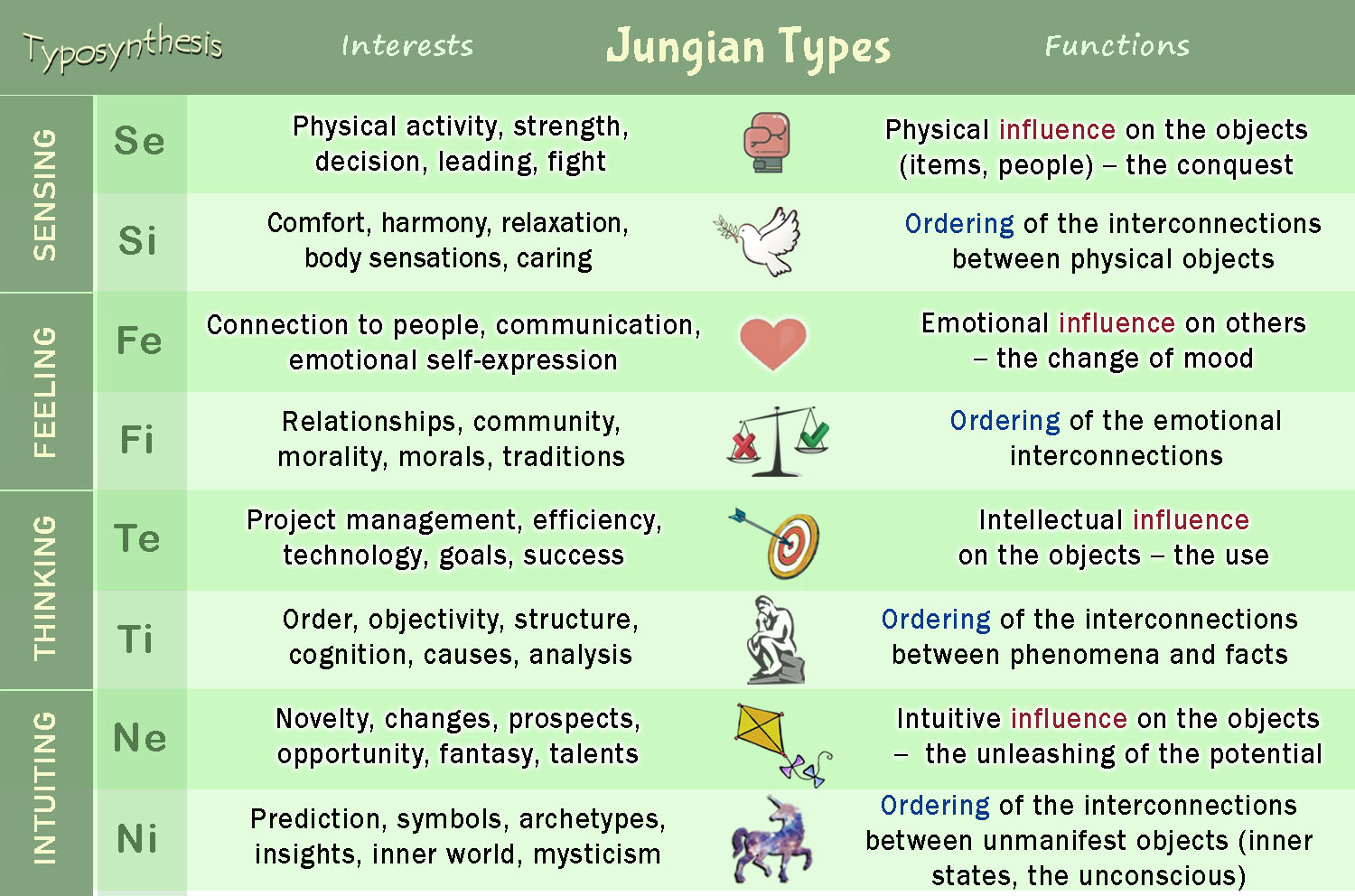TYPO-SYNTHESIS

Ukrainian version (українською) here >>>
Typosynthesis is an integrative approach of holistic psychology that helps individuals to find underlying root issues, discover their deep resources and to walk the path of personal change for improvement in various areas of life: personal, social, professional.
Typosynthesis focuses on the relationship between different personality typologies systems and different psychological approaches. Typosynthesis studies eight universal prototypes, which are described from different angles in Jungian typology, the Enneagram, in the Vannier’s planetary typology, in the homeopathic typology etc. Typosynthesis considers both horizontal and vertical development of a person. The combination of developmental level with psychological type can give a holistic vision of individuals.
MULTIPLE INTELLIGENCES
Since Goleman popularized the term emotional intelligence, the importance of it has become widely recognized. While the question of which is more important, IQ or EQ, is often asked, the answer is quite comple x. Some researchers think people may have other types of intelligence, including spiritual intelligence and physical intelligence.
x. Some researchers think people may have other types of intelligence, including spiritual intelligence and physical intelligence.
✅ SPIRITUAL intelligence;
✅ MENTAL intelligence;
✅ EMOTIONAL intelligence;
✅ PHYSICAL intelligence.
Back in 1921, in his work "Psychological Types", Swiss psychologist Carl Jung described in detail all four types of intelligence and considered each of them equally important. Carl Jung discovered four basic psychological functions (sensation, feeling, thinking and intuition), which correspond to the four types of intelligence (physical, emotional, mental and spiritual). Each of the four psychological functions is responsible for human functioning in one of four spheres: physical, mental, emotional and intuitive.
Four Jungian psychological functions (or mental functions):
✅ Function SENSATION enables a person to operate in the physical (material) world – the realm of the physical objects and the physical interactions. SENSING types perceive with the 5 senses the physical properties (tangible data) of one’s body and of the external objects. Focus on internal bodies sensations, movement, location, visual-spatial-kinesthetic information, external appearance of objects, physical energy, force, shape, beauty, color, consistency, temperature etc. Ability to express oneself with one's body and use one's hands to interact with the physical world: making things, craft. They act with practicality and realism.
We could relate the psychological function SENSING with Gardner’s Bodily-kinesthetic intelligence. Sensing also includes Gardner’s Naturalistic intelligence and Sensing Introverted is linked to Gardner’s Spatial Intelligence.
✅ Function FEELING enables a person to operate in the world of feelings and emotions – the social realm and interpersonal relationships. FEELING types perceive their own emotional state and recognize other people’s moods and feelings. Focus on emotional condition, mood, feeling expressing, interpersonal communication, mutual attraction or repulsion, people’s attitudes towards each other, social norms, developing and maintaining of good relationships, evaluation of things in terms of good and bad, pleasant or unpleasant, acceptable or unacceptable.
✅ Function THINKING enables a person to operate in the intellectual (mental) world – the realm of the factual data, information, logical inference, technology and intellectual interactions. THINKING types perceive the information about themself and about properties of external objects and phenomena. Focus on analysis, logical inference, proofs, causal relationships, intellectual comprehension of things and of oneself, frameworks, models, technical skills, impersonal attitude, judgement of information based on reason, objective criteria, measures, calculations.
We could relate the psychological function THINKING with Gardner’s Logical-Mathematical intelligence.
✅ Function INTUITION enables a person to operate in the intuitive world (beyond physical, feeling and thinking reality) – the realm of the nonmaterial, unmanifest objects (time, imagination, symbols, inner meanings) and the interactions between objects of the unconscious. INTUITING types perceive by way of the unconscious their own inner state and inner essence of the external objects. Focus on the flow of time: the past and the future; prognostication, ideas, hidden meanings and unmanifested possibilities, unconscious images, archetypes, imagination, fantasy, possible events, hidden motives, possible options, trend, perspective etc. Intuition is always about time, because it perceives the unmanifested which may manifest over time.

Four intelligences – four psychological functions - parameters (dimensions):
✅ PHYSICAL – PHYSICAL or BODY intelligence – function SENSATION - Physical space;
✅ EMOTIONAL – EMOTIONAL intelligence – function FEELING - Energy;
✅ MENTAL – MENTAL intelligence – function THINKING - Information;
✅ INTUITIVE – SPIRITUAL intelligence – function INTUITION - Time.
Dr. Jung found that each of the four basic psychological functions can have an introverted or extraverted orientation, depending on the direction of a person's attention: attention focused on external objects or attention focused on internal connections between objects. Accordingly, each of the four intellects has two options: extraverted and introverted, and together there are eight types of intelligence.
The Extraverted orientation contributes to the expansion in its area while the Introverted orientation contributes to stabilization in its area. EXTRAVERTED types initiate interactions with the new objects, act quickly and evaluate their influence primarily on the externally visible outcome, and secondly on their internal state. INTROVERTED types arrange and improve the inter-object relationships, act slowly and deeply. They evaluate their influence primarily on their internal condition (harmony, correctness), and secondly on the externally visible outcome.

